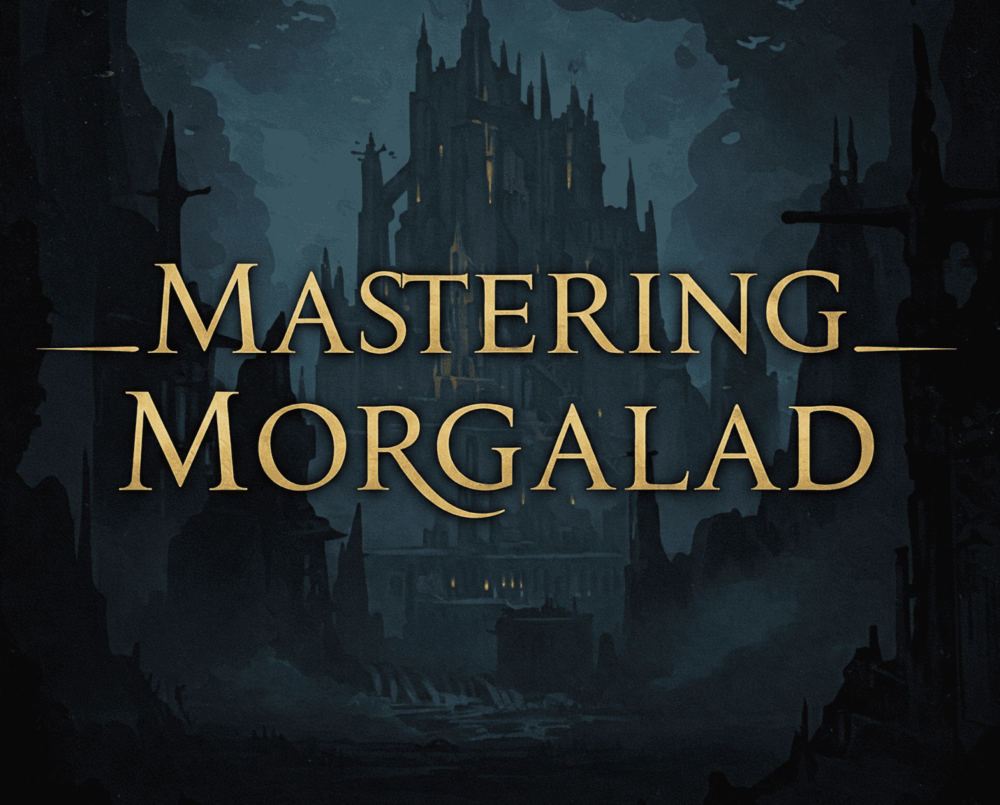
Gamemastering 101: Difficulty Ratings & Challenges with 4d6
Welcome back to “Mastering Morgalad”! In this fourth article of our series, we’re shifting our focus to the Gamemaster (Host) and their role in creating engaging challenges in the Morgalad Fantasy TTRPG. A key aspect of this is understanding Difficulty Ratings (DR) and how they interact with the 4d6 system to create balanced and exciting gameplay.
Understanding Challenges
In the Morgalad fantasy role-playing game there are two separate but equally important types of challenges:
- Attribute challenges
- Ability challenges.
To understand these adequately, it is important to understand the difference between attributes and abilities. Each character has six natural attributes that are measured and assigned a numeric value between -3 and +3 during character creation. Alongside these 6 natural attributes each character starts out with 8 standard abilities known as the Base 8.
Difficulty Ratings (DR): Setting the Stage
Difficulty Ratings (DR) determine how challenging a task is for the players. The “Morgalad Fantasy RPG Revised” uses two types of Difficulty Ratings: given numbers and categories.
Difficulty Categories:
These provide a general sense of difficulty, which is expressed numerically. Here’s a breakdown of the standard Difficulty Categories:
- Easy: 10
- Standard: 13
- Hard: 15
- Difficult: 17
- Extraordinary: 19
Scaling Difficulty:
It is important to remember that difficulties progress as characters increase in level so what is difficult for a level 1 character becomes easy for a level 15. Difficulty Categories increase by 5 for every 10 levels a character has obtained.
Rolling Against the DR: 4d6 + Bonuses
When a player attempts a challenge, they roll 4d6, add any relevant bonuses, and compare the total to the DR.
The formula is simple:
4d6 + Relevant Bonuses ≥ Difficulty Rating
If the total equals or exceeds the DR, the character succeeds. If it falls short, they fail. The GM determines the consequences of success or failure based on the situation.
Applying Attribute and Ability Challenges
The player must roll 4d6 + any relative bonuses against a given Difficulty Rating. If a learned ability applies, the player rolls against the Difficulty Rating. If no learned ability applies, the player must add +5 to DR and roll corresponding attributes.
Example:
Juniper attempts to pick a lock to escape an old abandoned mine. This would be an example of an ability challenge, and would use Finesse as the corresponding attribute.
Braditz uses his diplomatic skills to talk his way out of a hostile situation. This would be an example of an ability challenge, and would use Allure as the corresponding attribute.
Designing Encounters
When designing encounters, consider the party’s level and abilities. Use DRs to create a mix of easy, moderate, and challenging situations. Remember that player skill and creativity can overcome even the most daunting odds.
Tools for the Host
The “Morgalad Fantasy RPG Revised” provides tools for GMs to generate content on the fly. The Host’s toolbox provides them with all the necessary tools required to generate interactions and rewards on the fly. Some of these tools include:
- NPC Generation Tables
- City Generation Tables
- Treasure Generation Tables
- Random Trap Generation
- Antagonist Generation Tables
- Quest Building Ideas
Conclusion
By mastering Difficulty Ratings and the 4d6 system, you’ll be well-equipped to create thrilling and memorable experiences for your players. Remember to balance challenge with opportunity, and always reward creativity and ingenuity. In the next article, we’ll delve into character professions!
